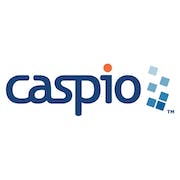Looking for the perfect bug tracking software? Our comprehensive buyer's guide covers everything you need to know to make an informed decision. From features to pricing, we've got you covered.
Are you tired of losing track of bugs, delaying releases, and facing customer complaints due to software errors? Look no further than bug tracking software. Software developers cannot afford to overlook the importance of reliable, efficient bug tracking. With a wide variety of options on the market, it can be overwhelming to choose the right bug solution to fit your team's unique needs.
This buyer's guide aims to simplify the selection process and provide insight into the advanced features and considerations for this essential system. Whether you're a small startup or a large enterprise, implementing effective bug tracking is crucial for maintaining a strong reputation and staying ahead of the competition.
What is bug tracking software?
This refers to a type of application that helps manage software development and identify and track bugs, errors, or defects in software code. It is used by developers, project managers, quality assurance experts, and other software professionals to streamline the development process and ensure software is of a high quality. Here are some of its common use cases:
-
Issue tracking: It enables users to create, track, and manage defects or project issues.
-
Agile development: Agile development methodologies require quick iterations to enhance software functionality in a short amount of time. This system assists in maintaining a consistent pace while ensuring quality software development.
-
Collaboration: Bug tracking systems provide robust features that let teams collaborate efficiently, such as comments and status updates. They ensure all team members can work together towards a common goal.
-
Quality assurance: Testing and reporting functions are another important use of this system. These features enable software testers to test to ensure it meets the desired quality level.
A wide range of companies and industries utilize this powerful tool, including software development, information technology, telecommunications, and healthcare. Companies of all sizes, from small start-ups to multinational corporations, can take advantage of these applications. By using one, companies can reduce the amount of time and resources spent on fixing software defects. This results in faster app releases, increases customer satisfaction, and allows companies to operate more efficiently.
Top benefits for investing in a bug tracking system
This is an essential tool for modern businesses as it helps them effectively manage their software development efforts and ensure a smooth user experience. Here are some of the key benefits of using a bug tracking program:
Improved software quality
By providing a standardized process for identifying, reporting, and fixing bugs, this program helps companies ensure that their software is of high quality and meets customer expectations.
Increased efficiency
With bug tracking software, developers can easily track the status of bugs and collaborate with each other to resolve them quickly. This streamlines the development process and helps teams work more efficiently.
Better communication
It provides a centralized and easily accessible platform for tracking bugs and and delivering efficient communication about them. This makes it easier for developers, testers, and stakeholders to stay up-to-date on the status of software issues.
Enhanced customer satisfaction
By fixing bugs quickly and efficiently, this comprehensive solution helps companies maintain a high level of customer experience and satisfaction. It also allows companies to prioritize critical software issues and address them before they become major problems.
Cost-effective
By catching bugs early in the development process, this platform can help companies save time and money in the long run. It also allows companies to assess the impact of bugs on their business and make informed decisions about how to allocate resources.
Improved software development process
A bug tracking solution provides valuable insights into the development process, allowing companies to identify common sources of bugs and improve their development practices accordingly.
10 key features of bug tracking software
Here are this solution's top 10 extensive features:
-
Creating and assigning bug tickets to developers for resolution.
-
Tracking the status of bugs from inception to resolution.
-
Categorizing bugs according to their type and severity, such as cosmetic, minor, major, and critical.
-
Providing a centralized repository for all bug reports and status updates.
-
Allowing for team collaboration between members and stakeholders through comments and attachments.
-
Generating reports and analytics on bug trends, frequency, and severity.
-
Integrating with other project management tools such as issue tracking, version control, and agile development tools.
-
Providing notifications and alerts when bug status changes or deadlines approach.
-
Offering customizable workflows and fields to cater to specific project and organizational needs.
-
Ensuring data security with user permissions and role-based access controls.
Bug tracking software is becoming increasingly important for efficient software development, particularly in the wake of social technology and its growing impact on the healthcare industry. Developers must adopt a concise writing style that highlights the importance of these powerful tools, in a way that's authoritative and engaging.
What to consider when adopting a bug tracking application?
Choosing the right tool for bug tracking is essential, and several factors must be considered before making a purchase.
Customization
Every business has unique needs. Therefore, businesses should consider bug tracking tools that are highly customizable. Customization will typically involve tailoring the software to the company's specific preferences and workflows.
Integration
Integration with other tools is another essential factor to consider. The bug solution should integrate seamlessly with other development tools, such as code repositories and project management tools.
Reporting
The ability to generate detailed reports and analytics is crucial for businesses. Managers need to be able to track trends and identify common issues, so choosing bug tracking software with a robust reporting feature is essential.
Scalability
As your team grows and the complexity of your software projects increases, your bug tracking app needs to be scalable. Scalability means that it can accommodate additional features, users, and projects.
Cost
It comes at different price points, so businesses must consider their budget when making a purchase. While it is tempting to choose the cheapest option, it is essential to keep future needs in mind to avoid spending again in the future.
Customer support
The availability of customer support is essential when it comes to bug tracking software. Choose a vendor that provides 24/7 support in case of any problems.
User interface
The user interface plays a crucial role when selecting this imperative platform. Getting a tool with an intuitive interface that team members can easily use can significantly increase productivity.
Industry trends for bug tracking software
Bug tracking software has come a long way since its inception. It has been designed to offer a centralized platform for monitoring, reporting, and tracking bugs and errors. The rising demand for software applications has led to a lot of advancements in this technology. One of the biggest trends is the integration of artificial intelligence (AI) algorithms and machine learning (ML) models. AI-based error detection and pattern recognition will simplify and streamline the entire debugging process.
Another trend in the industry is the incorporation of real-time monitoring and communication features that allow developers to keep track of who reported a particular error, when it was reported, and how it has been dealt with.
Additionally, cloud-based bug tracking software systems will be increasingly popular in the coming years because they make it easy to deploy and manage tracking tools remotely. Overall, streamlining workflow and enhancing team communication stands as the driving force behind the latest trends in bug tracking software.
Conclusion
To conclude, the adoption of bug tracking software is indispensable for organizations striving to enhance their software development processes and deliver high-quality products to their customers. The Pareto Principle states that 80% of results come from only 20% percent of action. If you put this in the perspective of bug tracking, then 20 of the bugs you locate and solve will lead to 80% stronger production. This tool enables teams to efficiently identify, track, and resolve issues throughout the development lifecycle, thereby improving overall product reliability and user satisfaction.
By leveraging it, businesses can streamline collaboration, prioritize tasks, and maintain transparency across teams, leading to accelerated development cycles and reduced time-to-market. Embraced across various industries, bug tracking software serves as a cornerstone in ensuring the delivery of robust, error-free software solutions, ultimately bolstering the reputation and success of businesses.







